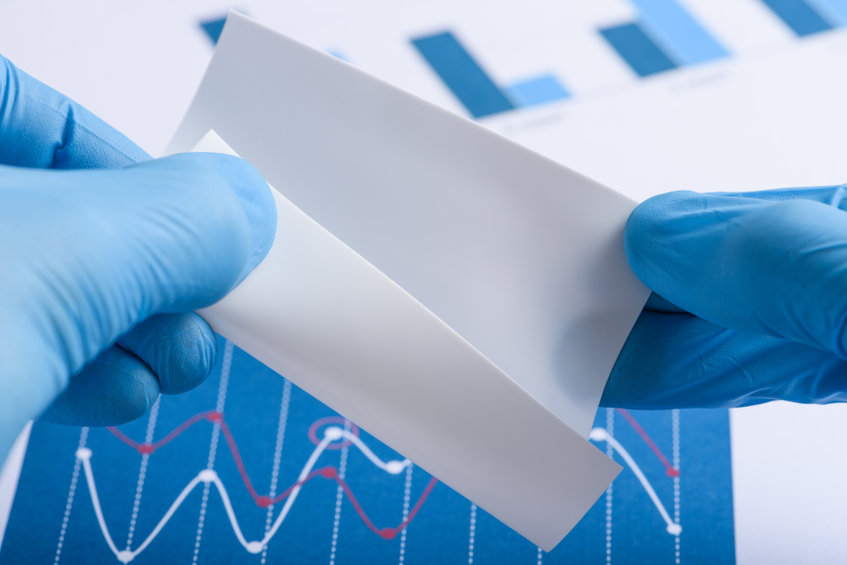This post is intended to provide insight as to the basics of polymer synthesis in the product development process. National Polymer is an expert in the field and can provide cost effective methods to help you effectively and efficiently reach your research and development goals.
Before diving into polymer synthesis, let’s talk about the basics of polymers. In its simplest form, a polymer is a large molecule made up of repeating subunits derived from molecules of low relative molecular mass, called monomers. Polymers, both natural (e.g. DNA, silk, cellulose) and synthetic (e.g. rubber, epoxy resin, polystyrene), play an important role in everyday life due to their range of properties. The term, polymer, is derived from the Greek word for many (poly) and parts (mer).
Polymer synthesis on the other hand, occurs when small molecules are linked together in order to create a larger structure (a macromolecule). In other words, the method for making macromolecules from smaller substituents (monomers) is polymer synthesis. Polymers not only have similar attributes to their parent monomer, but as a result of the new architecture from the polymerization process, unique physical properties can also appear.
Since the first synthetic polymer was invented in 1869 by John Wesley Hyatt, polymers have become central to all aspects of our lives – from household goods, such as electronic components, plastic storage containers or bottle caps; to medical devices, such as stents and implants; and even in space exploration, for space crafts, thermal control coatings, adhesives, tapes or thermal insulations.
In terms of applications, the biomedical market in particular, is a huge growth area for polymer synthesis. They’re playing a central role in the development and manufacture of medical devices, since their flexibility, light weight, non-ferrous properties and biocompatibility are enabling the next generation of implants, single-use devices, and packaging technologies.
In addition, Contract Development & Manufacturing Organizations (CDMOs), are developing polymers to use as the deliverers of genetic therapies. Poly (amino acids), actually can act as active pharmaceutical ingredients (APIs) in and of themselves.
Since the introduction of man-made polymers, many advances have taken place, particularly in biodegradable polymers. By being able to degrade, these types of polymers can be implanted into the body without requiring additional surgeries to remove them. For example, some polymer materials are woven into pouches and then put into a medical device that is put in the body. These pouches prevent infection, which is often caused by the biofilm that naturally occurs between the human tissue and the device.
Given its complexity, manufacturing advanced polymers for specialized applications such as these is no easy task. Before selecting a CDMO to produce your polymers, it pays to ask the following questions:
- What polymer processes have you completed and can you provide references?
- Do you understand the structure-property relationships of monomers and polymers for efficient optimization?
- Do you have the analytical tools to appropriately evaluate polymers to achieve target applications?
National Polymer is a leading R&D and manufacturing company specializing in polymer synthesis, formulation chemistry, deformulation, reformulation, engineered coating technologies, batch optimization, pilot coating, and batch production. To learn more about our capabilities, call us today at (800) 679.0477.
And thank you for reading our blog.



